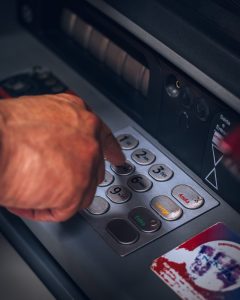Forex trading has seen a vast array of developments in the last few years, and one of the significant advancements is the introduction of synthetic assets. Synthetics in forex have become increasingly popular among traders due to their unique features and the ability to replicate real-world assets. In this article, we will explain what synthetics in forex are and how they work.
What are synthetics?
Synthetics are financial instruments that mimic the behavior of an underlying asset without actually holding the asset itself. In other words, synthetics are artificial derivatives that replicate the price movements of real-world assets. This means that traders can gain exposure to an asset without owning it, providing a more flexible way to trade.
Synthetics are created using a combination of financial instruments, such as futures contracts, options, and other derivatives. These instruments are combined to create a new asset that has similar characteristics to the underlying asset. The value of the synthetic asset is derived from the value of the underlying asset, which means that the two move in tandem.
How do synthetics work in forex?
In forex trading, synthetics are created by combining two or more currencies to form a new currency pair. For example, a trader could create a synthetic currency pair by combining the US dollar and the euro. The synthetic currency pair would then track the movements of the two currencies.
The value of the synthetic currency pair is derived from the value of the two currencies that make it up. The synthetic pair will move in tandem with the underlying currencies, allowing traders to gain exposure to the currency pair without actually owning it.
One of the significant advantages of synthetics in forex is that they offer traders a more flexible way to trade. For example, if a trader wants to gain exposure to a particular currency pair but is not able to trade it directly, they can create a synthetic currency pair that tracks the movements of the underlying pair.
Another advantage of synthetics is that they can be used to trade exotic currency pairs that are not commonly available. For example, a trader could create a synthetic currency pair that tracks the movements of the South African rand and the Japanese yen, allowing them to gain exposure to the pair even if it is not directly available.
The risks of trading with synthetics
While synthetics offer several advantages, they also come with risks. One of the significant risks associated with trading synthetics is the potential for slippage. Slippage occurs when the price of the synthetic asset moves away from the price of the underlying asset. This can happen due to market volatility or low liquidity, and it can result in significant losses for traders.
Another risk associated with trading synthetics is the potential for counterparty risk. Counterparty risk refers to the risk that the party on the other side of the trade will default on their obligations. This can happen if the counterparty is unable to meet their financial obligations, such as if they go bankrupt.
Conclusion
Synthetics in forex have become increasingly popular among traders due to their unique features and the ability to replicate real-world assets. They offer traders a more flexible way to trade and can be used to gain exposure to exotic currency pairs that are not commonly available. However, they also come with risks, such as slippage and counterparty risk. Traders should carefully weigh the advantages and risks of trading synthetics before deciding to use them in their trading strategy.






